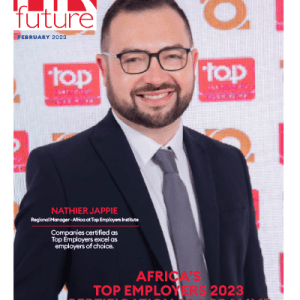I recently visited a retail client’s head office at midday and was greeted by loud music, balloons, and a lot of staffers soaking up the festive atmosphere.
A supplier was hosting a promotional event and I couldn’t help thinking, “clearly it helps to be in retail when it comes to employee engagement!” Of course, while it takes a lot more than occasional glitz and glamour to engage employees effectively, it would be foolish to overlook the merits of immediate gratification, however insignificant.
For instance, I find myself exercising far more regularly now that I’m getting rewarded with free smoothies. It certainly is difficult to fathom the logic – that the promise of a free drink next week is a greater motivator than sustained health and longevity. But perhaps that’s because we’re motivated by unconscious desires that we’re not as aware of as we think.
While everybody likes a good party with loads of free stuff, what is it that we really long for? When the hangover has run its course and the decorations have been packed away, what are we left with?
What we love, what we really long for, is being acknowledged for making a meaningful contribution.
This brings me to another client visit. This time, I was sitting at a boardroom table listening to a senior leader bemoaning the total lack of engagement she had experienced in her first ten months with the business. As she unpacked her frustration, I couldn’t help noticing a large box of used party decorations in one corner. No doubt, there had been some frivolity over the festive season, and no doubt decorations would again be called to action for a future pick-me-up. And until then …
While few business leaders will refute the importance of engaging their workforce, fewer still have figured out how to achieve this to the point where it becomes recognised as part of the company culture. Perhaps they really haven’t figured it out, or perhaps they simply haven’t seen a compelling business case for employee engagement.
Astute business leaders recognise that leadership is accountable for culture and, by extension, employee engagement. When employees engage effectively, both the employees and the shareholders share equally in the spoils through what we like to call discretionary effort.
Conversely, organisations with disengaged team members often seek to engage them through orchestrated campaigns and the return may well be that they work to fulfil their job descriptions. Typically, however, these organisations suffer from high staff turnover, if not attrition.
Real employee engagement is not about push; it’s all about pull. Real employee engagement doesn’t happen when the business engages employees through a campaign of some sort, but rather when employees engage the business because they believe they’ll get a return on their personal investment.
Business leaders who succeed at this invest in empowering their leaders to create a workplace that promises the opportunity to do meaningful work. They readily make the investment because they know that the return is discretionary effort.
Malcolm Ferguson is the Academy Head at TowerStone.













